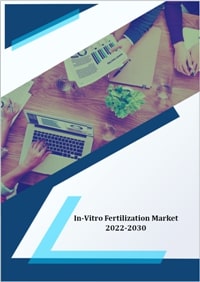
The in-vitro fertilization market is set to growth at a compounded annual growth rate of 10.1% during the forecast period from 2023 to 2030. Significant rise in couples to have children at later stage of life owing to increasing preference for professional career and technological adoption in IVF treatment will dve the market growth in the forthcoming years.
"Increased research activites to improve curilture media and capability in sperm preservation without losing on quality drive the market growth for culture media"
Culture media are currently holding the largest market share by instruments in the in-vitro fertilization market. Chief attributing factors are increased research activites in improving culture media and capability in preserving sperm without losing on quality. Increasing demand for egg processing media and establishment of numerous egg cryobanks further bolster the market growth for culture media. Strict regulatory mandates and need for maintaining optimum sterile conditions will propel the market growth of disposable devices at a faster rate.
"Frozen non-donor will be the fastest growing segment due to excellent live birth rate, better implementation and lower miscarriage rate"
Fresh non-donor is currently reigning the type segment for in-vitro fertilization market. High success rate in the first attempt is the major factor responsible for its impressive market growth. Frozen non-donor will be showcasing outstanding growth in the next few years on account of excellent live birth rate, better implementation, reduced cases of ectopic pregnancy and lower miscarriage rate.
"Availability of sophisticated equipment and significant rise in couples opting Assistive Reproductive Technology (ART) drive the market growth for fertility clinics"
Fertility clinics are dominating the end user segment for in-vitro fertilization market. Significant rise in the couples opting for ART treatment, Intracytoplasmic Sperm Injection (ICST) and Gamete Intrafallopian Transfer (GIFT) drive the fertility clinics market growth. Hospitals are showcasing steady growth on account of enhanced government funding to provide IVF treatment to poor families and rising public health awareness pertaining to infertility treatment.
"Rising prevalence of infertility and adoption of sophisticated technology pertaining to IVF drives the market growth in North America region"
North America is accountable for 35% market growth and is the leading regional segment for in-vitro fertilization market. The assisting factors responsible for its market dominance are rising prevalence of infertility. As per the research findings of American Society for Reproductive Medicine (ASRM), approximately 6.7 million women are suffering with infertility in the United States, which represents 11.0% of the reproductive population. Europe holds 30% market share owing to the government initiatives of providing monetary benefits pertaining to gametes freezing and IVF cycles. Asia Pacific represents 20% market share and will capture the market in the next few years on account of presence of large target population, adoption of sophisticated technology and low treatment cost in comparison to developed countries.
Biopharmaceuticals specializing in in-vitro fertilization market are Boston IVF, Cook Medical, Inc., Cooper Surgical, Inc., EMD Serono, Inc., Genea Biomedx, Irvine Scientific, Inc., OvaScience, Inc., Progyny, Inc., Thermo Fisher Scientific, Inc. and Vitrolife AB.
Historical & Forecast Period
This study report represents analysis of each segment from 2022 to 2032 considering 2023 as the base year. Compounded Annual Growth Rate (CAGR) for each of the respective segments estimated for the forecast period of 2024 to 2032.
The current report comprises of quantitative market estimations for each micro market for every geographical region and qualitative market analysis such as micro and macro environment analysis, market trends, competitive intelligence, segment analysis, porters five force model, top winning strategies, top investment markets, emerging trends and technological analysis, case studies, strategic conclusions and recommendations and other key market insights.
Research Methodology
The complete research study was conducted in three phases, namely: secondary research, primary research, and expert panel review. key data point that enables the estimation of In-Vitro Fertilization market are as follows:
Market forecast was performed through proprietary software that analyzes various qualitative and quantitative factors. Growth rate and CAGR were estimated through intensive secondary and primary research. Data triangulation across various data points provides accuracy across various analyzed market segments in the report. Application of both top down and bottom-up approach for validation of market estimation assures logical, methodical and mathematical consistency of the quantitative data.
| ATTRIBUTE | DETAILS |
|---|---|
| Research Period | 2022-2032 |
| Base Year | 2023 |
| Forecast Period | 2024-2032 |
| Historical Year | 2022 |
| Unit | USD Million |
| Segmentation | |
Instrument
| |
Type
| |
End User
| |
|
Region Segment (2022-2032; US$ Million)
|
Key questions answered in this report